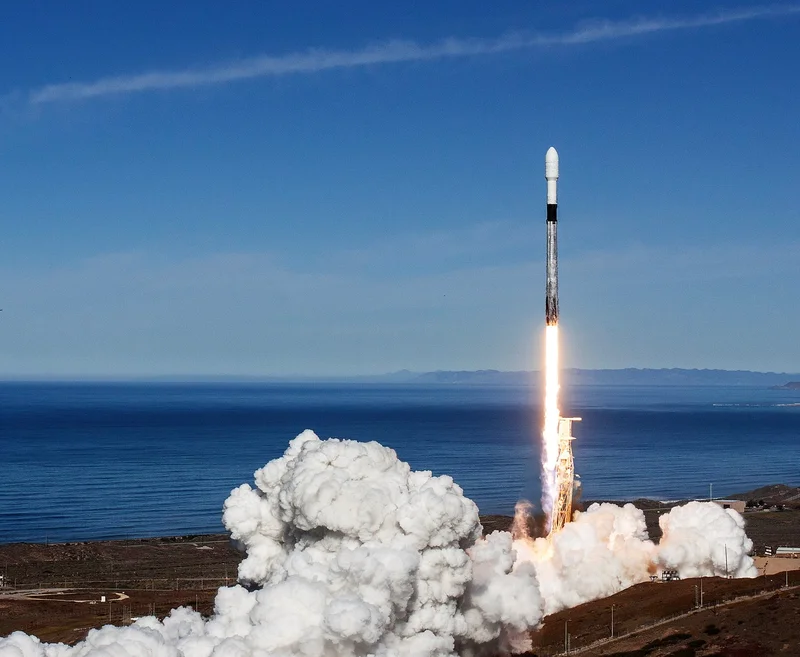Another Monday, another giant rocket launch. SpaceX's Starship Flight 11 went up, did its thing, and splashed down in the ocean. Everyone clapped. SpaceX’s announcer declared, "Welcome back to Earth, Starship," to a hunk of metal now sitting at the bottom of the Indian Ocean.
And I’m supposed to be impressed?
Let’s be real. We're on the eleventh full-stack test flight. The novelty of watching a 400-foot stainless steel tube not explode on the launchpad has officially worn off. The whole thing has transitioned from a nail-biting spectacle into a highly choreographed, almost… boring routine. Light the candle, watch it go up, watch the booster fall in the Gulf, watch the ship fall in the Indian Ocean. Rinse and repeat.
This isn't a criticism, not really. It’s an observation. The era of "rapid unscheduled disassembly" is over. The Wild West days of Starship development, where you’d tune in just for the chance to see a billion-dollar firework, have been replaced by the slow, methodical grind of actual engineering. And while that’s great for progress, it makes for terrible television.
The PR Machine vs. Reality
You have to hand it to them, the PR machine is still running at full throttle. News outlets declared that SpaceX launches 11th test flight of its mega Starship rocket with another win, and NASA's acting administrator, Sean Duffy, called it "another major step toward landing Americans on the moon's south pole." A "major step." Translation: "Please, Elon, for the love of God, don't let this thing be a decade behind schedule because our entire Artemis program is riding on your back."
NASA can't land astronauts on the moon without this vehicle. They've bet the farm on Starship being the lunar taxi service. So every time one of these things successfully executes a glorified belly flop into the ocean, they have to cheer like it just won the Super Bowl. What choice do they have? It’s like being a passenger in a car driven by a teenager with a learner's permit. You don't criticize their three-point turn; you just say "Great job, champ!" and pray you get home in one piece.

Elon Musk, for the first time, even went outside to watch the launch instead of staying in Launch Control. He said it was "much more visceral." Sure. Or maybe it’s just that the odds of the thing vaporizing the entire launch site have dropped low enough that it’s finally safe to get a tan. When the boss feels comfortable enough to step outside, you know the process has become predictable. And predictability is the enemy of excitement. This whole thing reminds me of when I tried to get my local government to fix a pothole on my street. They kept sending me updates: "We've assessed the pothole." "We've scheduled a team." "The team has acquired the asphalt." Just fix the damn thing already...
They’re testing things, offcourse. On this flight, they intentionally removed heat shield tiles to "stress-test vulnerable areas." They’re practicing new engine-burn configurations for the booster landing. This is the unglamorous, necessary work. It’s like watching a master chef practice chopping onions for a year. We know he’ll eventually cook a Michelin-star meal, but right now, all we’re seeing is a mountain of diced vegetables. When does the main course arrive?
From Sci-Fi Dream to Government Contractor
Here’s the part that really gets me. Starship was sold to us as the vehicle of dreams. The ship that would take humanity to Mars, make us a multi-planetary species, and fulfill the promise of every sci-fi book cover from the 1950s. It was supposed to be bold, revolutionary, and completely outside the slow, bureaucratic crawl of old-space contractors.
Now? Now, it’s basically just another government project with a really good social media team. Its most immediate and critical job isn't building a city on Mars; it's fulfilling a NASA contract to get a couple of astronauts from lunar orbit down to the surface. This is a bad development. No, "bad" doesn't cover it—this is an inevitable, soul-crushing transformation. The radical, explosive startup has become a reliable, box-checking vendor.
The success of Flight 11 isn't a triumph of vision; it's a triumph of project management. It proves SpaceX can iterate, collect data, and move incrementally closer to a deliverable. That’s fantastic news for NASA’s accountants and Artemis mission planners. But what does it mean for the grander vision? Does becoming the lunar equivalent of a FedEx truck kill the momentum needed to actually get to Mars?
We’re watching the dream get domesticated in real time. The goalposts have shifted from "Mars or bust" to "Let's just not screw up this NASA contract." And maybe that’s the only way this ever gets done. Maybe you have to prove you can do the boring stuff before you’re allowed to do the cool stuff. Then again, maybe I'm the crazy one for still expecting a revolution. This ain't that. It’s just slow, expensive, and increasingly predictable work. The question is no longer if Starship will fly reliably, but how many more of these "successful" ocean splashes we have to sit through before it actually does something.
The Spectacle is Dead. Long Live the Grind.
So, yeah, Starship Flight 11 was a success. A perfect, boring, incremental success. It did exactly what it was supposed to do, and in doing so, it hammered the final nail in the coffin of the program's early, exciting, chaotic phase. The days of edge-of-your-seat viewing are over. What’s left is the long, slow, arduous march toward operational readiness. It’s less rock and roll and more… filling out paperwork. It’s probably what’s necessary, but forgive me for not throwing a parade. The revolution will not be televised; it will be managed in a series of iterative test flights with diminishing public interest. Welcome to the future. It’s incredibly competent and just a little bit dull.

